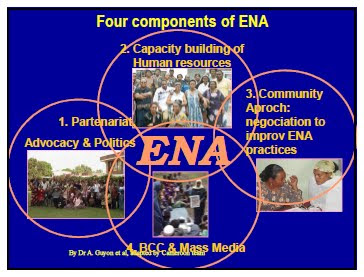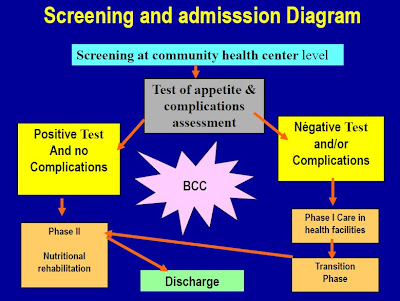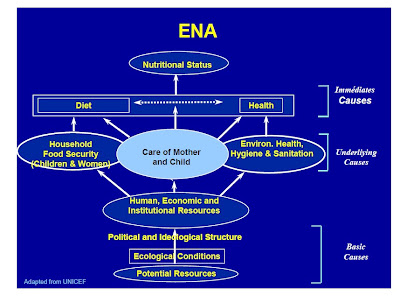Ackerson, L. K. and S. V. Subramanian (2008). "Domestic Violence and Chronic Malnutrition among Women and Children in India." American Journal of Epidemiology.
Ammaniti, M., A. M. Ambruzzi, et al. (2004). "Malnutrition and Dysfunctional Mother-Child Feeding Interactions: Clinical Assessment and Research Implications." Journal of the American College of Nutrition 23(3): 259–271.
Baker-Henningham, H., C. Powell, et al. (2005). "The effect of early stimulation on maternal depression: a cluster randomised controlled trial." Arch Dis Child 90: 1230–1234.
Be'gin, F., J.-P. Habicht, et al. (1997). "The Deterioration in Children's Nutritional Status in Rural Chad: The Effect of Mothers' Influence on Feeding." Am J Public Health 87: 1356-1359.
Bégin, F., J. E. A. Frongillo, et al. (1999). "Caregiver Behaviors and Resources Influence Child Height-for-Age in Rural Chad." Journal of Nutrition (JN) 129: 680-686.
Black, R. E., L. H. Allen, et al. (2008). "Maternal and child undernutrition: global and regional exposures and health consequences." Lancet 371: 243–260.
Casapı´a, M., S. A. Joseph, et al. (2007). "Parasite and maternal risk factors for malnutrition in preschool-age children in Belen, Peru using the new WHO Child Growth Standards." British Journal of Nutrition 98: 1259–1266.
Delpeuch, F., P. Traissac, et al. (1999). "Economic crisis and malnutrition: socioeconomic determinants of anthropometric status of preschool children and their mothers in an African urban area." Public Health Nutrition 3(1): 39-47.
El-Sayed, N., A. G. Mohamed, et al. (2001). "Malnutrition among Pre-school Children in Alexandria, Egypt." J Health Popul Nutr 19(4): 275-280.
Engle, P. L., P. Menon, et al. (1999). "Care and Nutrition: Concepts and Measurement." World Development 27(8): 1309-1337.
Galloway, A. T., L. M. Fiorito, et al. (2006). "‘Finish your soup’." Appetite 46(3): 318–323.
Golden, M. H., M. P. Samuels, et al. (2003). "How to distinguish between neglect and deprivational abuse." Archives of Disease in Childhood 88: 105-107.
Gragnolati, M., M. Shekar, et al. (2005). India’s Undernourished Children: A Call for Reform and Action. Washington, DC USA, Health, Nutrition, and Population Family - World Bank.
Harpham, T., S. Huttly, et al. (2005). "Maternal mental health and child nutritional status in four developing countries." J Epidemiol Community Health 59: 1060–1064.
Hassan, H., W. Moussa, et al. (2006). Assessment of dietary changes and their health implications in countries facing the double burden of malnutrition: Egypt, 1980 to 2005. The double burden of malnutrition Case studies from six







